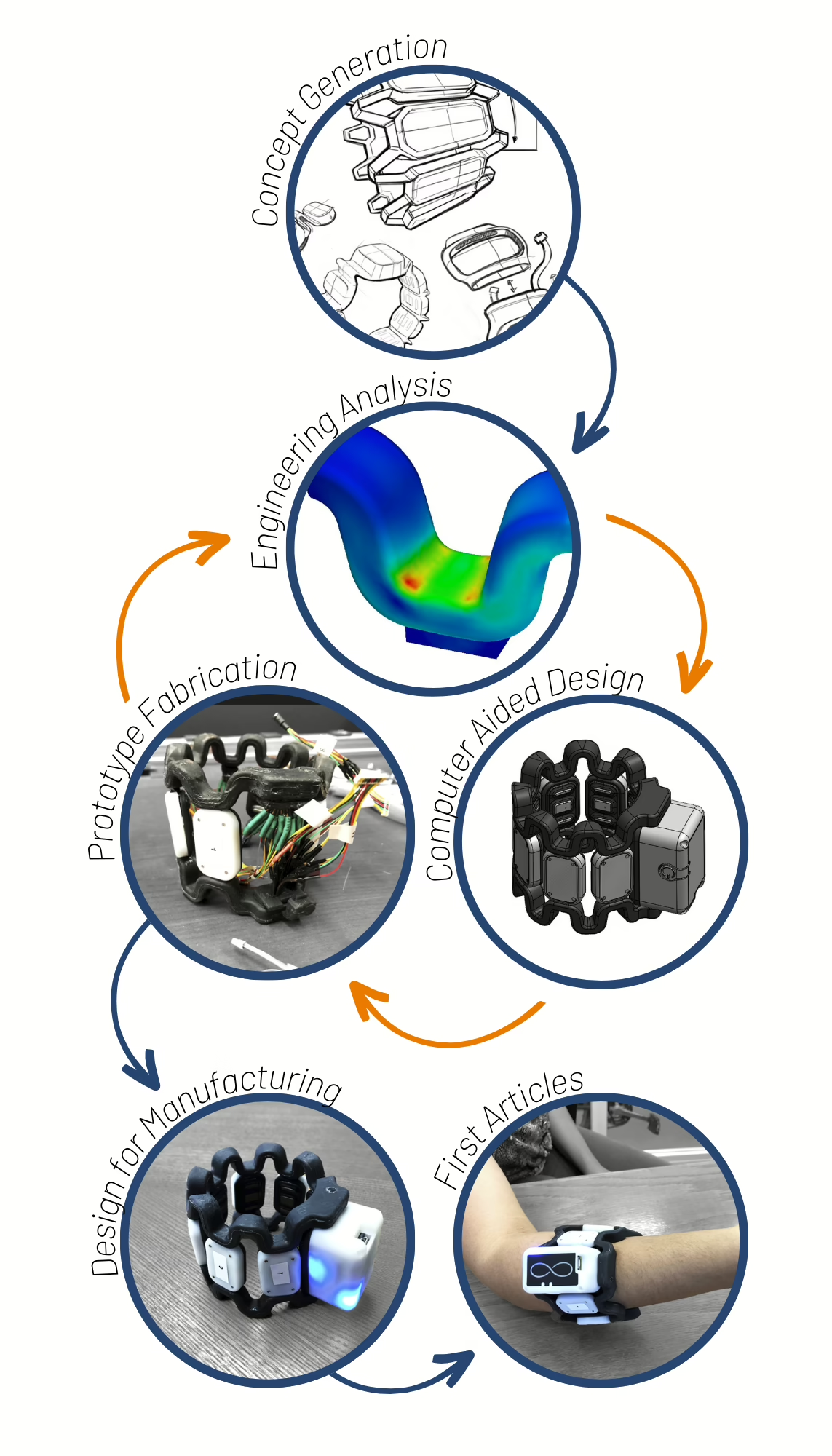Our Process for Engineering R&D
Focus on effective progress, not just speed.
Many R&D teams are racing toward deadlines, juggling prototypes, burning through budgets — and all that movement feels like progress. Unless that work solves the right problems, it’s just sprinting on a treadmill.
- Adopt a risk-first approach, tackling the riskiest parts of a problem first.
- Embrace minimalism, not by cutting corners but by being strategically align among your team of what makes the most impact.
- Be intentional about setting requirements and adhere to them without going overboard.
- Encourage collaborative problem-solving to keep the team making progress.
We help manufacturers find practical solutions to hard problems
Let us help you
Turn Your Imagination Into Innovation

A Case Study – Functional prototypes in six weeks
Our customer was trying to non-invasively monitor Central Venous Pressure and came to us with a sensor problem. The pre-packaged sensor they were using to non-invasively characterize bloodflow was providing noisy raw data and their signals analysis algorithm couldn’t support a conclusion whether their concept worked or failed. We performed a Design Review by quantifying the biological requirements with our customer and comparing against the sensor’s datasheet to identify performance limitations. We spent a couple of days researching alternative sensors and found an unpackaged sensor component with far better sensitivity and frequency performance. Because it was “unpackaged”, it needed additional circuitry and firmware drivers to be developed before it could start producing usable data.
Outcome of the Design Review
We recommended changing to the new sensor because of the performance gains. We provided the needed part numbers and a “blueprint” to integrate with their current data collection system. This was outside their wheelhouse, so we followed up with an additional phase of work to design and fabricate a prototype circuit board along with the firmware drivers to fully integrate it into their software so they could continue their work. Within a week of the first meeting, we’d designed a prototype PCB and sent for fabrication. Over the next five weeks, we developed the working firmware and delivered the functional prototype, including a real-time signals viewer to quickly assess sensor placement and support demonstrations. The new PCB and clean sensor data allowed them to quickly build an appropriate signals analysis algorithm, collect patient data, and prove the concept.
PROJECT PROPOSAL
How much will it cost?
Every project is customized to meet your needs. We provide either Fixed Price or Time & Materials proposals that layout the Project Plan and define the Scope of Work. Fixed Price budgets are best-suited for projects that have well-defined deliverables and can be estimated with accuracy. Time & Materials budgets are provided for those projects with more uncertainty, technical challenges, or ambiguous deliverables. Our T&M estimates reflect our current understanding of the effort but also leave room for the flexibility to modify the Scope of Work and Deliverables throughout the project. Therefore, our T&M proposals are easily tailored to meet your goals and budget.
PROJECT STATUS REPORT
Keeping you involved and up-to-date
If you’ve ever been frustrated by not knowing how much a project is costing you or suddenly receiving a huge invoice you weren’t expecting, you’ll appreciate our weekly Project Status Reports. Throughout the project, weekly status updates keep you up-to-date on the budget, schedule, and progress. These may be emails, team conference calls, or online/in-person meetings depending on the subject matter and your preference. In addition, we have Design Reviews with your participation, complete with sketches, images, prototypes, or design documentation to review.
